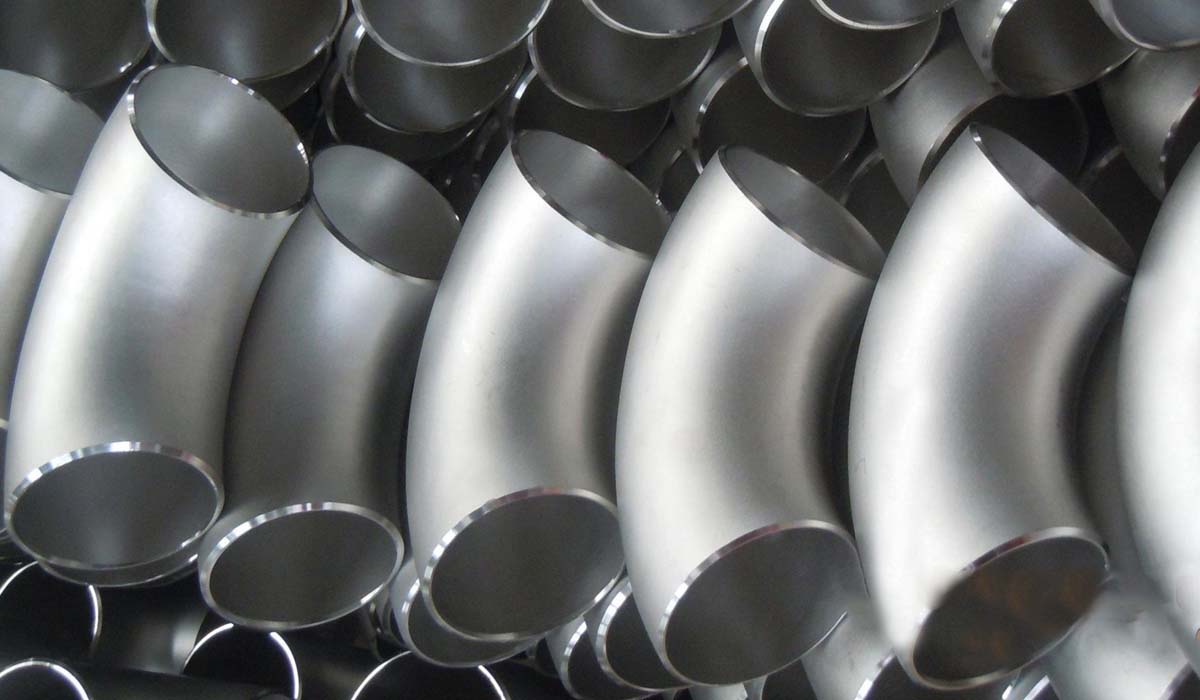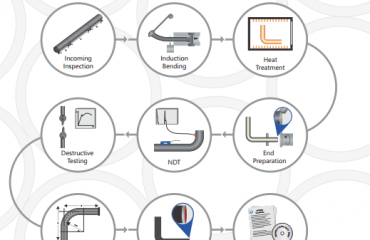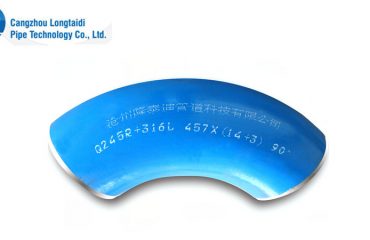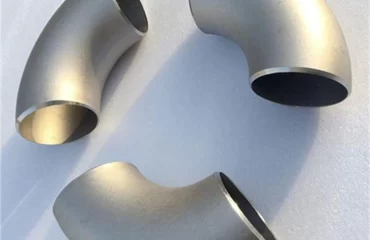
ASTM B366 Hastelloy C276 Butt Welded Elbow
Introduction
Hastelloy C276 is a nickel-molybdenum-chromium superalloy with excellent corrosion resistance in a wide range of harsh environments. This alloy is particularly known for its resistance to pitting, crevice corrosion, and stress corrosion cracking. ASTM B366 specifies the requirements for wrought nickel and nickel alloy fittings, including butt welded elbows made from Hastelloy C276.
Hastelloy C276 Alloy
Composition
Hastelloy C276 has a complex chemical composition, providing it with its superior corrosion resistance and mechanical properties. The typical composition includes:
- Nickel (Ni): 57% (minimum)
- Molybdenum (Mo): 15-17%
- Chromium (Cr): 14.5-16.5%
- Iron (Fe): 4-7%
- Tungsten (W): 3-4.5%
- Cobalt (Co): 2.5% (maximum)
- Manganese (Mn): 1% (maximum)
- Vanadium (V): 0.35% (maximum)
- Silicon (Si): 0.08% (maximum)
- Carbon (C): 0.01% (maximum)
Properties
- Corrosion Resistance: Exceptional resistance to a wide variety of chemical environments, including strong oxidizers, reducing acids, and chlorides.
- High Temperature Stability: Maintains its properties at elevated temperatures, making it suitable for high-temperature applications.
- Mechanical Strength: High tensile and yield strength, along with good ductility and toughness.
ASTM B366 Standard
ASTM B366 covers the standard specification for factory-made wrought nickel and nickel alloy fittings, including elbow fittings. The standard includes:
- Chemical Composition: Specifies the required chemical elements and their permissible limits.
- Mechanical Properties: Defines the necessary mechanical properties, such as tensile strength, yield strength, and elongation.
- Manufacturing Processes: Outlines acceptable manufacturing processes like forming and welding.
- Testing Requirements: Includes requirements for non-destructive testing and pressure testing.
Types of Butt Welded Elbows
Long Radius (LR) Elbow
- Description: Radius is 1.5 times the nominal pipe diameter.
- Applications: Used where smooth flow and reduced pressure drop are critical.
- Advantages: Minimizes turbulence and erosion due to gradual directional change.
Short Radius (SR) Elbow
- Description: Radius is equal to the nominal pipe diameter.
- Applications: Suitable for tight spaces where a compact fitting is necessary.
- Advantages: Ideal for space-constrained applications, but may cause higher pressure drops and turbulence.
Manufacturing Processes
Forming
- Hot Forming: Heating the Hastelloy C276 to a suitable temperature and then shaping it into the desired elbow form.
- Cold Forming: Shaping the material at or near room temperature, typically for smaller fittings.
Welding
Welding Hastelloy C276 requires careful control to avoid contamination and maintain the alloy’s properties. Common methods include:
- TIG Welding (GTAW): Preferred due to its precision and control.
- MIG Welding (GMAW): Used for larger welds or where speed is a factor.
Heat Treatment
Post-weld heat treatment is often necessary to relieve stresses and restore corrosion resistance.
Quality Assurance and Testing
Non-Destructive Testing (NDT)
Ensures the integrity of the fittings without causing damage. Methods include:
- Ultrasonic Testing: Detects internal flaws using high-frequency sound waves.
- Radiographic Testing: Uses X-rays or gamma rays to reveal internal defects.
- Dye Penetrant Testing: Identifies surface defects by applying a dye.
Pressure Testing
Verifies the fitting’s ability to withstand operating pressures. Methods include:
- Hydrostatic Testing: Filling the fitting with water and pressurizing it to check for leaks.
- Pneumatic Testing: Using air or gas to pressurize the fitting.
Certification
Certified compliance with ASTM B366 standards is crucial. Certificates typically include:
- Material Test Reports (MTRs): Documenting chemical composition and mechanical properties.
- Compliance Certificates: Confirming adherence to ASTM standards.
Applications
Butt welded elbow fittings made from Hastelloy C276 are used in various industries due to their exceptional properties:
- Chemical Processing: Handling highly corrosive chemicals and acids.
- Oil and Gas: Offshore and onshore applications where resistance to sour gas and chloride-induced stress corrosion cracking is critical.
- Pharmaceutical: Equipment exposed to corrosive cleaning agents and processes.
- Power Generation: Including flue gas desulfurization systems and nuclear reactors.
- Marine: Components exposed to seawater and harsh marine environments.
Advantages of Hastelloy C276 Butt Welded Elbow Fittings
- Superior Corrosion Resistance: Effective in a wide range of aggressive environments.
- High Strength: Excellent mechanical properties at both ambient and elevated temperatures.
- Versatility: Suitable for a broad spectrum of applications.
- Reliability: Meets stringent quality and performance standards.
Conclusion
ASTM B366 Hastelloy C276 butt welded elbow fittings are essential components in systems requiring high corrosion resistance and mechanical strength. Their compliance with stringent standards ensures reliability and performance in demanding environments. These fittings are invaluable in industries such as chemical processing, oil and gas, pharmaceuticals, power generation, and marine applications, where durability and resistance to harsh conditions are paramount.




You must be logged in to post a comment.